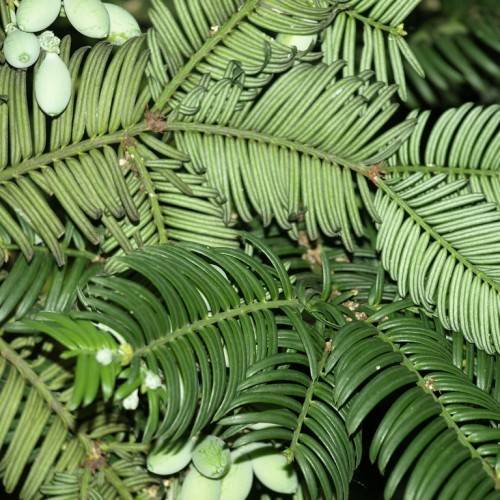
Japanese plum yew
Cephalotaxus harringtonia
Cycle:
Perennial
Watering:
Average
Hardiness Zone:
6 - 9
Flowers:
Flowers
Sun:
Part shade,full shade
Cones:
Yes
Leaf:
Yes
Growth Rate:
Low
Maintenance:
Moderate
Care Level:
Medium
watering
The Japanese plum yew (Cephalotaxus harringtonia) needs to be watered regularly, but not too often. During the summer months, the plant should be watered once a week, allowing the soil to dry slightly between waterings. During the winter, watering should be reduced so it should be done only every 2 to 3 weeks. It is also important to make sure the soil around the roots is not soggy, as this could lead to root rot. When watering, water deeply until the water starts to drain from the bottom of the pot. Make sure to not over-water as this could lead to root and stem rot.
sunlight
Japanese plum yew plants thrive when planted in a location with bright, indirect sunlight for 4 to 6 hours per day. Full sun exposure is not recommended because the plant may become scorched in intense heat and direct sunlight. This species prefers morning sunlight rather than afternoon sunlight since the cooler, indirect sunlight helps it maintain its glossy foliage. The Japanese plum yew also needs some protection from wind and extreme temperatures, as it may become more susceptible to illness when exposed to harsh winds and cold temperatures. Additionally, the soil should be well-drained and kept moist but not soggy.
pruning
Japanese plum yews should be pruned immediately after flowering. They can be pruned either lightly or heavily, depending on the desired shape of the shrub. For a fuller look, prune lightly each year, removing only a few select branches by cutting just above leaf nodes. For a taller look, prune aggressively by thinning the branches by up to 50%. Pruning in late spring/early summer will help ensure a healthier and stronger regrowth.
